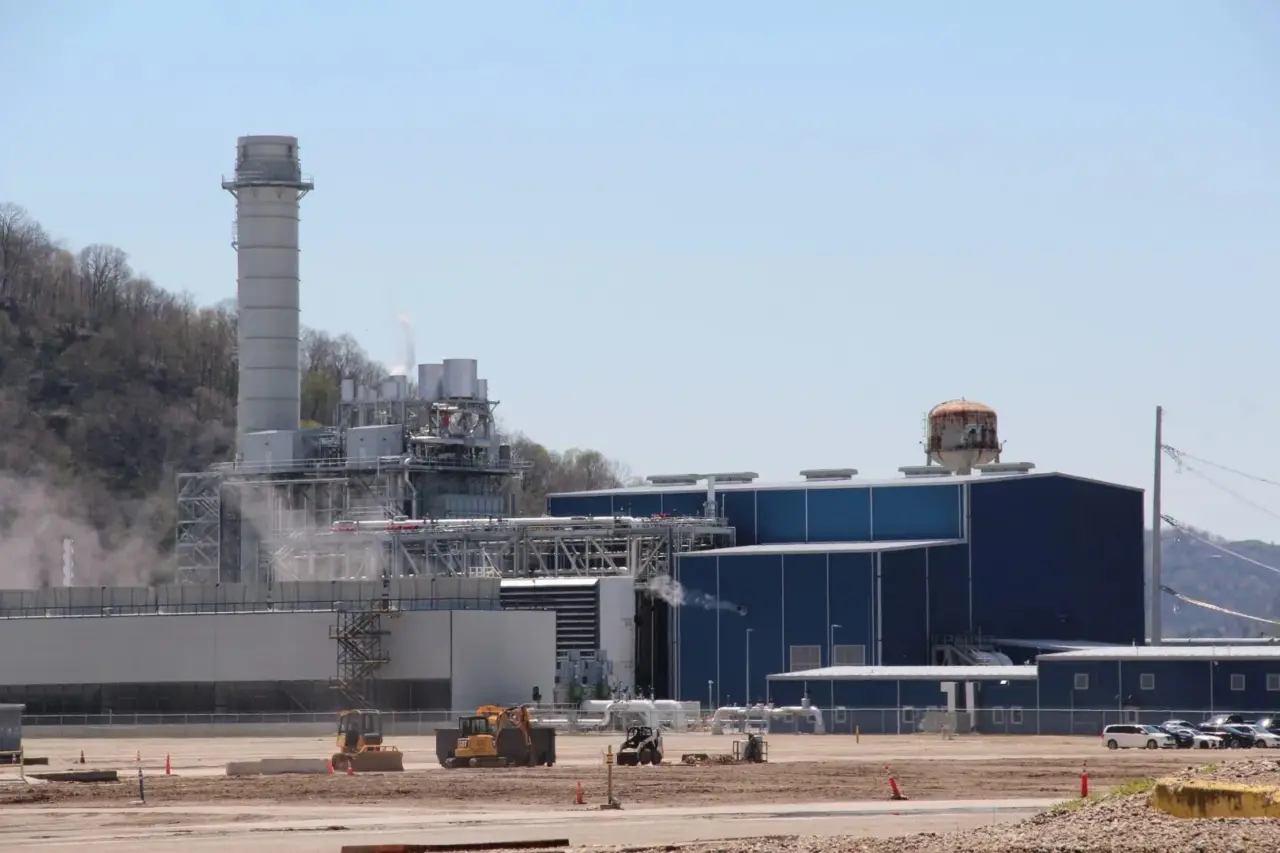
Long Ridge Energy Generation, in Hannibal, Ohio started burning hydrogen along with natural gas in this photo from April, 2022, sending electricity onto the mid-Atlantic grid.
Reid R. Frazier / The Allegheny Front


Long Ridge Energy Generation, in Hannibal, Ohio started burning hydrogen along with natural gas in this photo from April, 2022, sending electricity onto the mid-Atlantic grid.
Reid R. Frazier / The Allegheny Front

Reid R. Frazier / The Allegheny Front
Long Ridge Energy Generation, in Hannibal, Ohio started burning hydrogen along with natural gas in this photo from April, 2022, sending electricity onto the mid-Atlantic grid.
State lawmakers are looking at best practices for regulating newly-announced hydrogen hubs.
The federal hubs planned to be near Philadelphia and Pittsburgh are meant to demonstrate how to make and use clean-burning hydrogen in sectors that make a lot of pollution, like the steel industry and manufacturing.
Health and environmental advocates are calling for high standards to prevent more planet-warming emissions, as most hydrogen today is made with fossil fuels.
Hydrogen itself releases water vapor when burned, not greenhouse gases. Though hydrogen is plentiful in the atmosphere, it’s not easily captured. It’s usually made by splitting the hydrogen and carbon atoms in natural gas.
That process releases carbon dioxide. If the carbon is captured, the process is called “blue” hydrogen. Hydrogen is “green” if renewable electricity is used to split water molecules.
The House Environmental Resources and Energy Committee last week brought together lawmakers from other states and policy experts from advocacy groups to hear recommendations.
Rachel Fakhry, policy director for emerging technologies with the Natural Resources Defense Council, said if the state fails to work with the public on strong rules, it risks raising energy costs and creating mistrust.
“Pennsylvania must adopt rigorous climate and public health standards for all hydrogen production. Production is energy intensive. Without strong standards, Pennsylvania’s hydrogen hubs will increase carbon emissions and air pollution,” Fakhry said.
Fakhry said green hydrogen must also meet high standards.
“We don’t want to divert existing clean energy powering Pennsylvania homes and businesses in favor of hydrogen production. The new clean energy must be within reasonable proximity to hydrogen production and generated during the same hours the hydrogen is being produced,” she said.
David Koehler is an Illinois state Senator who helped create a new tax credit in that state that gives a $10 million credit in 2026 and 2027 to users of the new hydrogen. He said only 10% of it can be used for electric generation that requires gas combustion.
“This restriction is intended to ensure that 90% of the credit is applied to sectors that are more difficult to decarbonize than electricity,” Koehler said.
Koehler said they included measures to help communities with a history of heavy pollution, and a study will be done after 2027 to look at how effective the credits were in reducing greenhouse gas emissions.
Health advocates are calling on lawmakers to keep hydrogen out of power generation and home heating, which they say are easier to clean up with renewable electricity.
“It delays the better, cheaper, tested solution of electrification and it’s expensive for customers, many of whom are already financially burdened by energy bills,” said Linnea Bond, a health educator with Physicians for Social Responsibility Pennsylvania.
PSR PA held its own briefing on hydrogen after the House committee meeting.
Bond said proposals to blend hydrogen with natural gas are dangerous and would be a “climate backstep.” That’s because hydrogen, as the lightest element, can leak more easily from metal pipes, causing them to corrode.
The gas industry and its backers are promoting the use of gas to make hydrogen. After the hydrogen hubs announcement, the Marcellus Shale Coalition said on its website, “The developments are positive for further innovative uses of our abundant natural gas resources.”
Bond said relying on natural gas to make hydrogen will increase reliance on gas and raise the risk of methane leaks. Methane has about 80 times the warming power of carbon dioxide over a 20 year period.
StateImpact Pennsylvania is a collaboration among WITF, WHYY, and the Allegheny Front. Reporters Reid Frazier, Rachel McDevitt and Susan Phillips cover the commonwealth’s energy economy. Read their reports on this site, and hear them on public radio stations across Pennsylvania.
(listed by story count)
StateImpact Pennsylvania is a collaboration among WITF, WHYY, and the Allegheny Front. Reporters Reid Frazier, Rachel McDevitt and Susan Phillips cover the commonwealth’s energy economy. Read their reports on this site, and hear them on public radio stations across Pennsylvania.
Climate Solutions, a collaboration of news organizations, educational institutions and a theater company, uses engagement, education and storytelling to help central Pennsylvanians toward climate change literacy, resilience and adaptation. Our work will amplify how people are finding solutions to the challenges presented by a warming world.